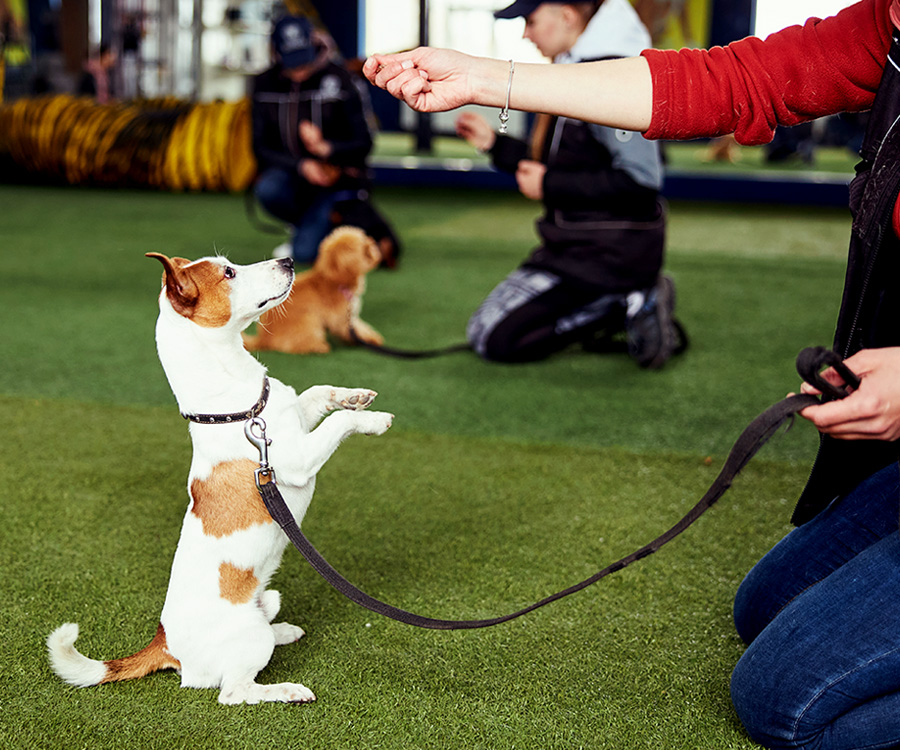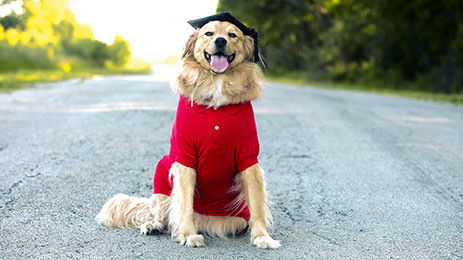Understanding Dog Body Movement During Dog Training
Understanding Dog Body Movement During Dog Training
Blog Article
Important Tips for Effective Dog Training: An Overview for Pet Owners
Reliable pet dog training is a diverse process that calls for a calculated approach customized to both the animal's character and the owner's goals. Recognizing just how to navigate these barriers can substantially enhance the training experience, inevitably transforming the relationship between owner and pet.
Comprehending Dog Habits
Understanding pet behavior is essential for efficient training and fostering an unified relationship between pooches and their owners. Pets communicate mostly through body movement, articulations, and actions, making it critical for owners to translate these signals accurately. Acknowledging a pet's position, tail setting, and ear alignment can offer understandings into its emotional state. As an example, a wagging tail does not constantly indicate joy; it can also indicate enjoyment or anxiousness.

Socialization plays a significant role in dog actions; direct exposure to numerous settings, individuals, and other animals can considerably impact a dog's personality. In addition, variables such as type attributes and private temperament should lead training approaches, as some types may have specific behavior qualities that require tailored strategies. By recognizing these components, owners can create a helpful environment that urges positive actions, resulting in successful training outcomes and a deeper bond with their animals.
Establishing Regular Commands
Efficient communication with your pet starts with establishing constant commands. This foundational aspect of training is essential for cultivating understanding in between you and your animal. Uniformity in the commands you use makes certain that your canine can accurately associate certain words or phrases with the preferred actions.
When selecting commands, select clear, distinctive words that are simple to separate and claim from each other. Prevent making use of similar-sounding commands that may puzzle your pet. Making use of "sit" and "stay" is suitable, however "rest" and "struck" could lead to misunderstandings.
Furthermore, keep the very same tone and volume for each command. Canines are sensitive to singing cues, so varying your tone can create confusion.
It is equally important to ensure that all relative are on the same web page pertaining to the commands utilized. A united front in command usage will certainly protect against blended signals and reinforce the learning procedure.
Positive Reinforcement Strategies
The power of positive support in pet dog training hinges on its capacity to urge preferred habits through incentives and appreciation. This technique is based in the principle that behaviors adhered to by positive outcomes are extra likely to be duplicated. By including favorable reinforcement right into your training regimen, you can properly shape your dog's habits in a constructive fashion.
To execute favorable reinforcement, it's necessary to determine what motivates your pet dog, whether it be deals with, toys, or spoken praise. When your pet dog performs a wanted action, such as remaining on command, immediately compensate them with a treat or affection. This organization between the command and the positive end result strengthens their understanding.
It's critical to timing the rewards properly; supplying the reinforcement within secs of the wanted behavior assists your pet make the connection (dog training). Furthermore, uniformity is key-- make sure that all member of the family utilize the exact same commands and incentive systems to avoid confusion

Slowly, you can minimize the regularity of treats as your canine discovers the actions, transitioning to commend or intermittent rewards. This technique not just cultivates a solid bond between you and your canine however likewise advertises a favorable understanding environment, making training a pleasurable experience for both.
Socialization and Communication
Regularly revealing your pet dog to a range of atmospheres, individuals, and other pets is essential for their social development. Socializing ought to start early, preferably during the essential home window of 3 to 14 weeks, when puppies are most responsive to new experiences. Older canines can additionally profit from continuous socializing initiatives.
Present your pet to different setups, such as parks, pet-friendly stores, and urban areas. This direct exposure assists them adjust to different stimulations, decreasing anxiety and fear reactions. Motivate positive communications with other dogs and individuals, guaranteeing that these encounters are regulated and safe to cultivate confidence.
Utilize organized playdates with well-mannered pet dogs, as this can enhance your canine's social abilities and show them go to my blog suitable habits. Obedience classes and training sessions also give excellent possibilities for socialization, allowing your dog to engage with others in a monitored atmosphere.
Display your pet dog's body movement during communications, as this will certainly aid you evaluate their comfort level. Slowly increase direct exposure to even more challenging scenarios while making certain that each experience declares. A well-socialized pet is more probable to show well balanced habits, making them a joy to have in any setup.
Addressing Usual Training Challenges
Every pet owner will certainly come across training challenges at some time, no matter their pet's age or socialization degree. Recognizing typical concerns such as stubbornness, interruptions, and fearfulness can help in establishing check this reliable approaches for renovation.

Distractions throughout training sessions can derail emphasis. To fight this, begin training in a silent setting with minimal stimuli. Gradually introduce distractions as the pet becomes more skilled in commands. Short, regular training sessions are also reliable in keeping focus.
Terror can impede a pet's discovering process. Steady desensitization to the resource of concern, paired with go to website positive support, can help alleviate anxiety. Persistence is critical; never force a canine right into a situation that causes distress, as this may exacerbate the concern.
Eventually, understanding and resolving these usual difficulties with a structured method will certainly cultivate an extra productive training experience, reinforcing the bond between dog and proprietor while advertising effective learning.
Verdict
In summary, effective canine training depends on a comprehensive understanding of canine habits, the facility of regular commands, and the application of favorable support methods. Socialization plays an essential duty in developing well-adjusted pets, while addressing common training obstacles requires patience and flexibility. By implementing these crucial techniques, pet proprietors can promote a strong bond with their dogs and advertise desirable behaviors, ultimately leading to a harmonious partnership in between human beings and their canine buddies.
Comprehending pet dog habits is vital for reliable training and cultivating a harmonious connection in between canines and their owners.Socialization plays a considerable role in pet dog habits; direct exposure to different environments, individuals, and other pets can significantly influence a canine's character.The power of positive reinforcement in pet training lies in its capability to motivate wanted habits with incentives and praise. By integrating favorable support right into your training routine, you can properly form your dog's habits in a positive manner.
In summary, effective pet training relies on a detailed understanding of canine habits, the facility of regular commands, and the application of favorable reinforcement strategies.
Report this page